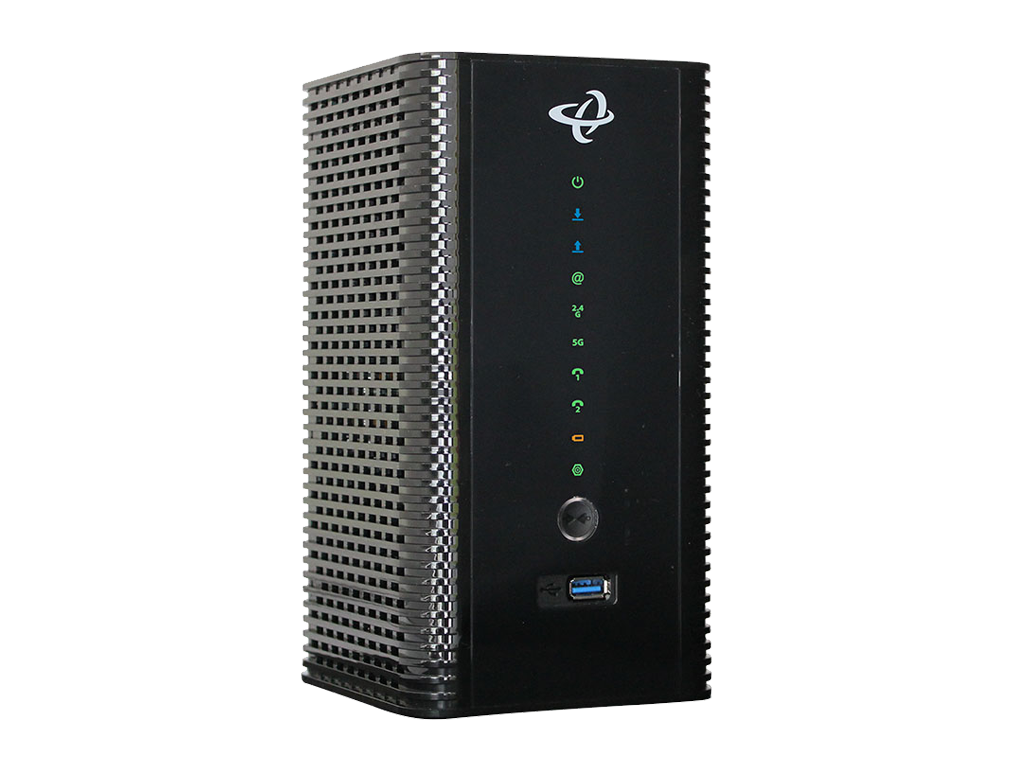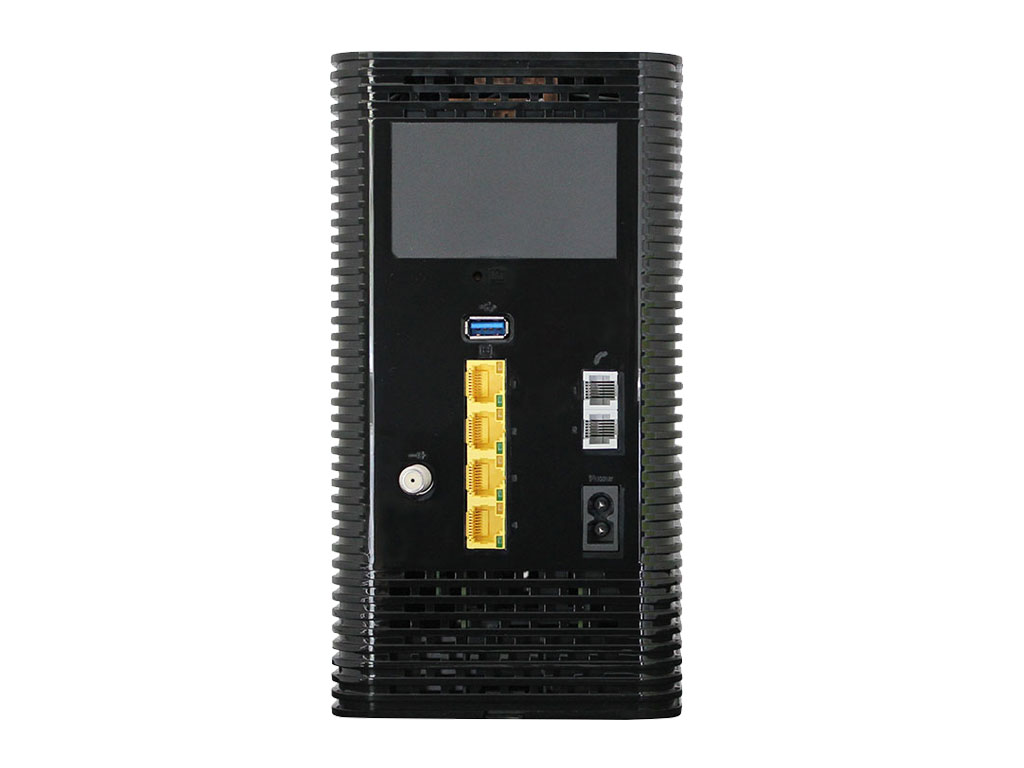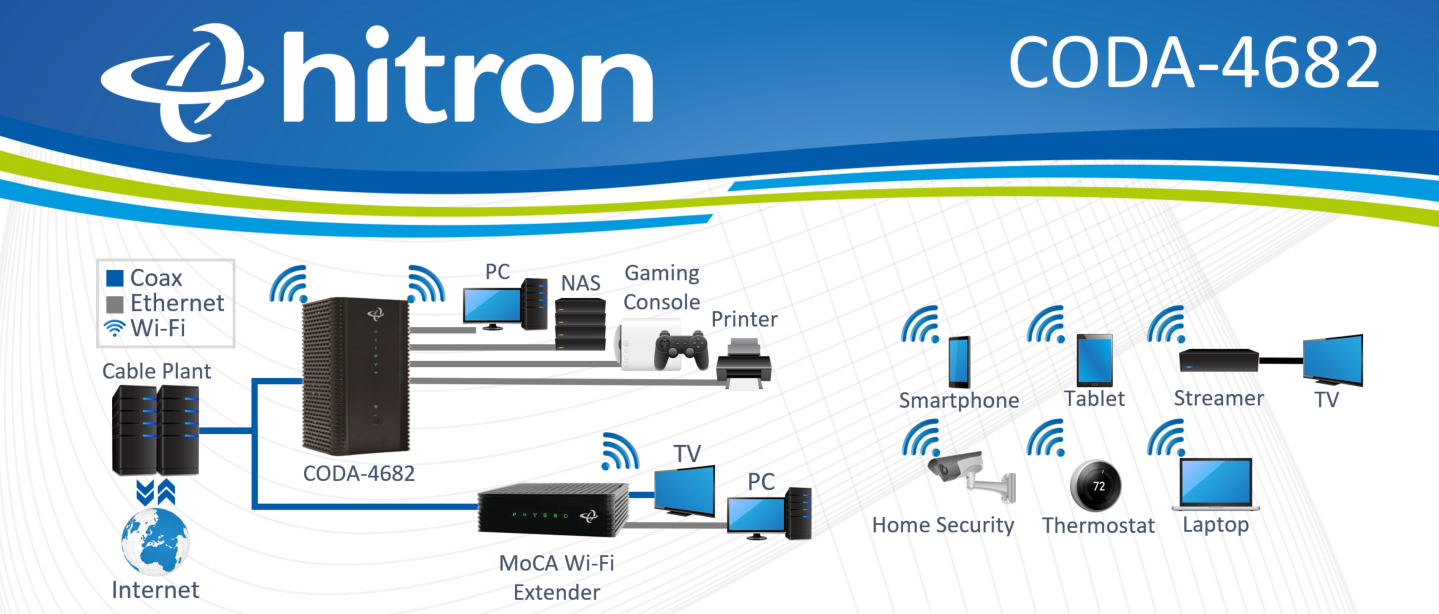Multi-Gigabit Speeds with DOCSIS 3.1
Perfect for higher tier multi-Gigabit service plans, the CODA-4682 can receive 5 Gbps bidirectional based on 2xOFDM + 32 QAM over its DOCSIS 3.1 interface.
Software-switchable Return Frequency
Be ready for 85MHz returns and higher-tier upstream speeds. Since the CODA-4682 has a software-switchable upstream frequency (5-42MHz / 5-85MHz), you can upgrade customers to higher-tier upstream speeds without replacing their hardware.
Unleash your WiFi
Give your customers a home network that’s ready for today and tomorrow’s demanding applications. The CODA-4682 gateway incorporates a 4×4 5 GHz 802.11ac Wave 2 dual-band concurrent MU-MIMO and 3×3 2.4 GHz 802.11n access point to ensure users get the enhanced coverage, fast speeds and rock solid reliability for all their devices and applications.
Compatible with DOCSIS 3.0
Deploy the CODA-4682 on DOCSIS 3.0 and DOCSIS 3.1 networks. That means when you’re ready to upgrade to DOCSIS 3.1, you won’t need to change the customer’s hardware..
Bonded MoCA 2.0 for Better WiFi Coverage
Integrated bonded MoCA 2.0 delivers a near-Gigabit wired backbone over the home’s coax wiring, enabling homeowners to get a strong reliable network in every corner of the home. Hitron’s AutoSync software seamlessly pairs the gateway with a MoCA extender.
Four Gigabit Ethernet Ports
Four Gigabit Ethernet ports offer ultra-fast connections for wired clients.
Easy to Set up and Manage
Installation is a snap with the CODA-4682. Since its built-in TFTP client obtains the IP address and configuration data from the network server automatically, the gateway is up and running with just a few simple connections. WiFi Protected Setup (WPS) makes it easy for your customers to protect their networks. And you get complete remote control and management with SNMP, TR-069 and HNAP.
Compatible with DOCSIS 3.0
The CODA-4682 can be deployed on your current network. As a DOCSIS 3.0 modem, it offers 32 bonded downstream and 8 bonded upstream channels. When you upgrade the network to DOCSIS 3.1, you won’t need to swap out customer hardware.
Easy to Setup and Manage
Installation is a snap for your end users. The built-in TFTP client automatically gets the IP address and configuration data from the network server. That means a few simple connections is all it takes to get up and running. The CODA-4682 supports pre-configured and pre-enabled Wi-Fi security via WiFi Protected Setup (WPS), allowing end users to rapidly setup a secure wireless network without manual configuration. And SNMP, TR-069 and HNAP support provide total remote control over the device for fast and effective troubleshooting.
Key Specifications
- DOCSIS 3.1 compliant
- DOCSIS 3.1 2×2 multi-carrier OFDM
- DOCSIS 3.0 32×8 channel bonding
- Switchable 5-42/5-85MHz Upstream
- Wi-Fi 3×3 2.4 GHz 802.11n and 4×4 5 GHz 802.11ac Wave 2 dual band MU-MIMO
- MoCA 2.0 Channel Bonding for highest performance
- One USB 3.0 host, supporting Network Attached Storage (NAS) functionality
- Integrated DLNA Media Server with support for video, audio and image serving
- Extensive operator control via configuration file and SNMP
- TR-069 and HNAP for easy setup and remote management
- Enhanced management and stability for low total cost of ownership
- MyHitron App and OptiMy support
Learn More about Cable Modems & Routers
What’s the difference between a modem and a cable modem?
A modem and cable modem are different devices because of the services that they connect to. A DSL modem connects to landline or telephone lines (also referred to as Copper by Internet Service Providers). A cable modem connects to Cable TV wiring (coax or coaxial...
Cable Modem Routers: Band Steering Explained
In today’s world, smart devices and connected IoT devices are everywhere in every home. With all these devices connected on one network, it can get difficult to ensure a smooth online experience while streaming, gaming, and video-calling all under the same roof....
Cable Modem Channels Explained
Cable modems communicate directly with Internet service providers (ISP) to transmit data back and forth. This is also known as downstream and upstream channels of data and requires multiple channels for each to offer optimal performance. Here’s everything know about...
Can DOCSIS 3.1 Cable Modems Increase Speeds?
Fast Internet is often considered a household essential. So many everyday things require an Internet connection, from smart home technologies to computers and phones. Your cable modem plays an integral role in achieving the best possible Internet speeds since it’s...
Cable Modems Explained: Channel Bonding
Too much device traffic on one home Wi-Fi network leads to congestion which leads to slow Internet. That’s why modern cable modems have evolved to create more than one “lane” – or channel – to let that traffic through. This feature is called channel bonding. If you...


